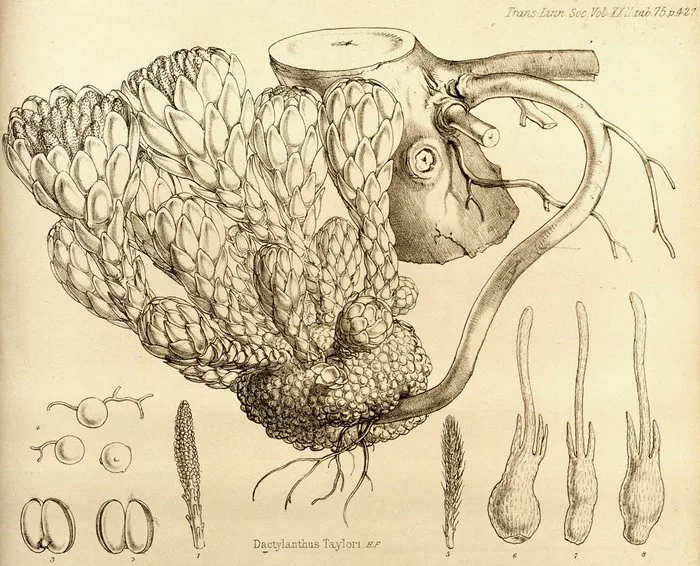Greater Wellington, New Zealand — A remarkable rediscovery of the rare and regionally Threatened-Critical plant, Te pua o te Rēinga, also known as wood rose or Dactylanthus taylorii, has been made in a regional park, marking the southernmost known wild population of this unique parasitic species in Aotearoa New Zealand.
The plant, last documented in the wild in the Kaitoke area in 1914, was unexpectedly found in an area closed to the public within the Wainuiomata water collection zone by a bird specialist conducting routine surveys on behalf of Greater Wellington. David Boone, ecosystems and community manager for Greater Wellington and co-chair of the Rōpū Tiaki working group, expressed surprise at the find.
“Our contractor was not actively searching for the plant but discovered several clusters near a bird count station we have monitored annually for over 20 years,” Boone said. “While the plants are not in robust condition, appearing as remnants of an ancient population, further monitoring is crucial to assess their health and determine conservation actions.”
The Wainuiomata forest remains one of the most pristine lowland forests in the lower North Island, maintaining much of its original ecological character since European settlement. It provides vital habitat for native birds such as the tītipounamu (rifleman) and kiwi, and now hosts one of New Zealand’s rarest plant species.
Avi Holzapfel, Department of Conservation operations manager and Dactylanthus taylorii expert, highlighted the significance of this southern population. “Individual plants can live for decades or longer. Early signs suggest this population consists of mature plants that may have existed undetected for many years,” Holzapfel explained. “Protecting these plants from predators like possums and rats is essential to enable seeding, which could help rejuvenate their numbers.”
Due to its parasitic nature, Te pua o te Rēinga depends entirely on host trees, making conservation efforts complex. Holzapfel emphasized that forest-wide pest control, such as that conducted by Greater Wellington, has been key to the plants’ survival.
Pollination of the species is linked to the rare short-tailed bat, pekapeka. Recent acoustic monitoring near the Pākuratahi River detected a new population of central lesser short-tailed bats, expanding known ranges beyond the Tararua Range and northern Wairarapa where bats had not been observed recently. “Since short-tailed bats can travel over 40 kilometers during nightly feeding, it is likely they have previously visited and pollinated this newly discovered population,” Holzapfel noted.
The rediscovery has prompted renewed collaboration among the working group responsible for translocating Te pua o te Rēinga seeds in 2020, Greater Wellington, Wellington City Council, and the Department of Conservation. Representatives from six iwi — Rangitāne o Wairarapa, Ngāti Kahungunu, Taranaki Whānui, Ngāti Toa Rangatira, Te Āti Awa ki Whakarongotai, and Raukawa — are developing a co-management plan to protect and nurture the wild population.
Amber Craig, Pou Rautaki Whenua for Rangitāne o Wairarapa and working group member, highlighted the cultural significance of the plant. “This rediscovery is deeply exciting for us as mana whenua,” she said. “By leading this project with mātauranga Māori alongside partner agencies and communities, we aim not only to protect Te pua o te Rēinga but to ensure it thrives.”
Craig stressed the importance of preserving the whakapapa (genealogy) of the plants, calling for a holistic approach that respects the relationships Te pua o te Rēinga has with other species within the ecosystem.
The newly drafted Protection and Recovery Plan outlines immediate steps, including site protection, comprehensive surveys of surrounding areas, and identification of additional individuals. Efforts are also underway to develop educational resources for Greater Wellington field staff and facilitate knowledge sharing with iwi and national experts.
“Te pua o te Rēinga is a spiritual plant that has brought us together, exemplifying kotahitanga — unity and collective strength,” Craig added.
The Wainuiomata water collection area is recognized as a Key Native Ecosystem due to its high ecological value and vulnerability to predators. It is slated to become part of the proposed Puketahā eco-sanctuary, with ongoing pest control managed through the Greater Wellington Key Native Ecosystems programme.


